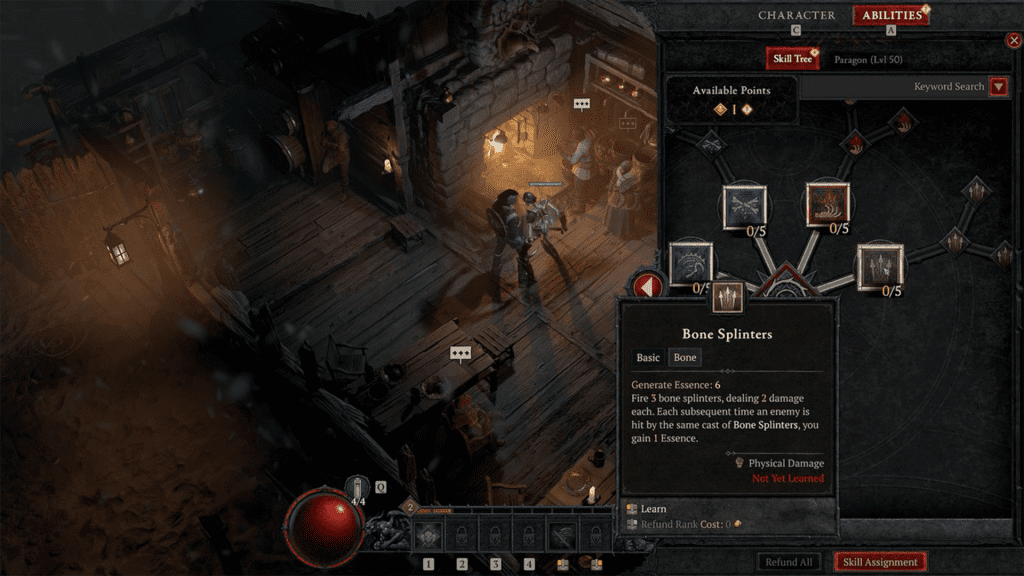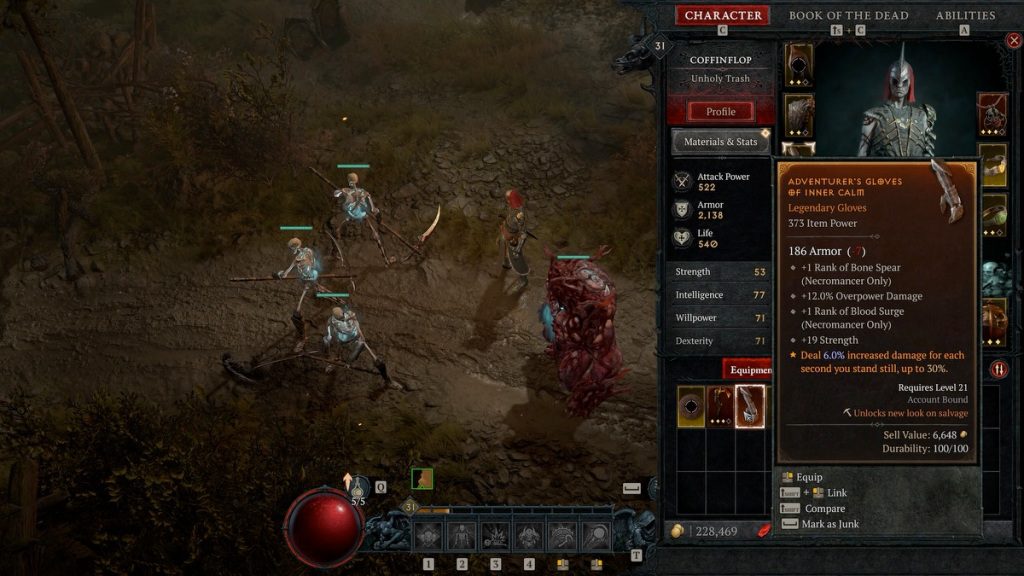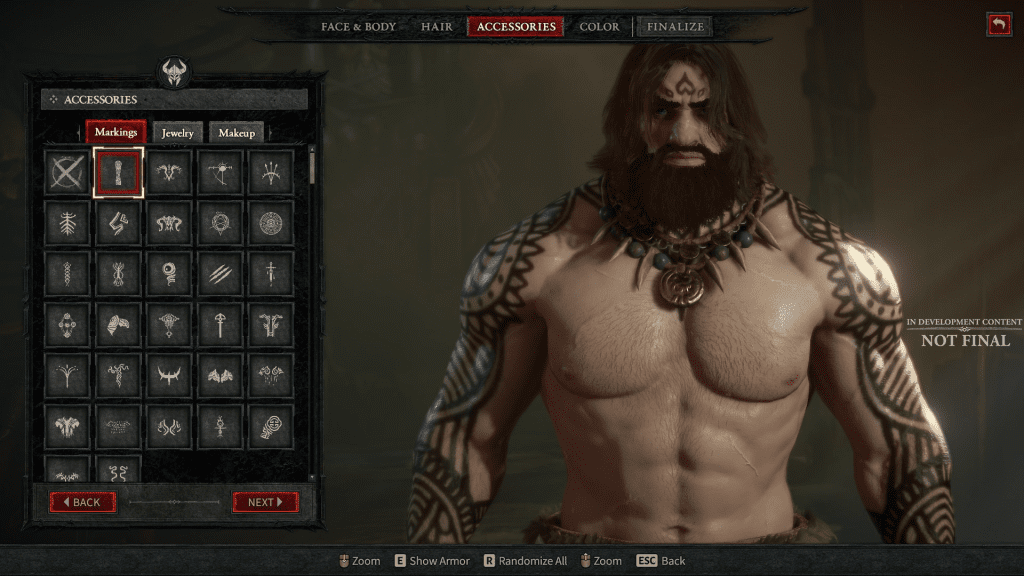In the ever-changing world of video games, where competition is intense and fans’ tastes can shift quickly, one title remains constant: Diablo. It’s a series that can always be relied on for its meaty combat and tasty, expansive lore.
Now, emerging from the legacy of its predecessors, Diablo IV, the latest installment from the long-running franchise, takes center stage. Despite straddling the line between past successes and future challenges, Diablo IV proves once again that the march of time has done little to dull the franchise’s razor-sharp fangs.
Diablo IV takes place 50 years after the events of Diablo III. Unsurprisingly, the world of Sanctuary is still a dreary place to live. The war between heaven and hell has decimated humanity, but the Prime Evils are finally dead. But just as things were starting to look up, Lilith, daughter of Mephisto, returns.
While Lilith is no doubt evil, the “good guys” aren’t that much better. As a lone warrior pursuing Lilith, you encounter her former partner, the fallen angel Inarius. His religion, the Cathedral of Light, is one of the few things holding human society together, but he seems just as unhinged as Lilith and is obsessed with finally leaving Sanctuary and returning to the High Heavens.
The basic story is easy to pick up, but there’s a lot to dig into. Diablo IV references the first three entries, as well as the mobile game Immortal, novels, and books — all spanning over 25 years of content. So, you’ll pick out that a character like Rathma (son of Lilith and Inarius) is important, but you may not know precisely why. The game could really use a built-in encyclopedia because even though I played the entire series, I did so chronologically as they released over the years, unable to remember everything that happened, and I surmise many other fans won’t either.
Diablo IV returns to the darker atmosphere fans loved in Diablo II. Things are bad in Sanctuary, and every muddy smudge and bloodstain looks terrific against the highly detailed environments. The game weighs in at almost 100GB, which seems outrageous until you see just how much care Blizzard put into the art. Given how great everything looks, I wish there were more camera options. Some of the in-game cutscenes zoom in on characters, and I wish that had happened more often. The environments and models are high enough fidelity for this to be a first or third-person game, but it’s impossible to enjoy them to the fullest from an isometric point of view.
Lilith steps into the villainous role, but nobody’s hands are clean.
Blizzard Entertainment
The sound design is also excellent here. The melancholy whistles of birds accompany the soundtrack in forests, and dungeons are filled with the creaking of old boards and the screams of cultists. Playing as a Necromancer, I heard a wide variety of juicy sound effects as I exploded corpses and raised the dead. The voice cast also does a great job. Series staple and long running narrator Deckard Cain is missing (rest his soul), but new characters are evocative of actor Michael Gough’s performance from over the years. There’s just the right blend of ham and gravitas to give everyone a dramatic punch that fits so well in a story about the warring of heaven and hell.
Progression in Diablo IV is a bit different than in previous titles. While the story is still split into acts, you no longer must progress through them linearly. Instead, when the game begins, you can take on any one of the first three acts. Each has a recommended level, but if you decide to grind XP, nothing stops you from attempting them out of order. They’re each self-contained stories that unlock a piece of the mystery surrounding Lilith’s plans.
Since you’re not beholden to acts, you can explore Sanctuary more freely. Blizzard has filled the map with optional content to fill the gaps from A to B. You can take on side quests from the denizens of the towns and villages scattered throughout the land, and there are public events (much like Destiny) that typically have you completing a simple objective while fighting off enemy hordes. There are also dungeons of varying sizes dotted about and smaller encounters called cellars which have you facing down a group of enemies led by a strong variant.

Skill trees have tons of branching paths, but it’s not difficult to re-select abilities for experimentation.
Blizzard Entertainment
Going open world could have backfired here, but it’s handled rather well. Even though you’re given the freedom to tackle content at your leisure, the world does change to reflect events. I didn’t notice that I was ever locked out of any content. Still, if you revisit towns after a significant happening, you’ll typically find updated dialog and potentially more side quests to perform.
Combat in Diablo IV is all about building a character with synergy. Ideally, all your chosen skills will work together to allow you to cause a constant stream of damage while refilling your mana when needed.
For example, as a Necromancer, you can use Blight on a group of enemies which will cause Area of Effect damage. Further upgrades to Blight cause your minions to do 15% more damage to Blighted enemies and slow them. Then you can use Corpse Explosion, upgraded to cause Blight, and refill your mana with each corpse used. Once you have enough mana, you can start casting Blight again and rinse and repeat.
I only got a chance to play as a Necromancer due to the limited review period, but all the classes have this same sort of balancing act to their unique mechanics. It makes things more interesting than Diablo II, where you just summon a ton of skellies and let the good times roll, which is great because you spend most of your time in this game fighting.

Still plenty of skellies though.
Blizzard Entertainment
Diablo is the OG looter game, and the core gameplay loop in Diablo IV continues to center around upgrading your gear. Since the world scales with your level, better items drop as you progress. You’re constantly upgrading your character build and optimizing skills to cause the most damage. Luckily, it’s very cheap to re-spec characters, so if you get a piece of gear that inspires a new strategy, the skill tree can be quickly rearranged.
Most Diablo players will agree the game doesn’t really start until you beat it for the first time. The best items are locked behind the higher World Tiers, which require you to finish the story and complete one of the endgame dungeons. Unfortunately, this is where the game will fall apart for some. Once you hit the endgame, there’s no pretense of story to keep pushing you forward. There’s new content, and Blizzard will introduce more in the form of seasons throughout its time as a live service game. However, unless you like the grind and PVP combat, you’ll likely find this is where you’ll put down the game.
Diablo IV calls the greatness of Diablo II to mind, and during my time with it, the also avoided the issues fans had with Diablo III (namely a lack of grimness). However, the seasonal content, battle pass, and monetization weren’t live during the review period and the information about the forthcoming pricing is alarming. The game is excellent without any of them, but if future updates and content revolve around feelings of FOMO and predatory microtransactions, it’ll be ruined.

The game is all about customization but much of the future content will be gated behind Battle Pass.
Blizzard Entertainment
A lot of players defend these systems by saying they’re optional, but every piece of gear Blizzard puts in the shop or gates behind a battle pass is one less than you could have earned by playing.
Nonetheless, the version of Diablo IV I played showed a lot of love and attention to detail, and I hope that’s the one the public gets to experience in its purest form.
Diablo IV launches June 6 on PC, Xbox Series X|S, Xbox One, and PlayStation 4 & 5. This review reflects the PC version of the game.
